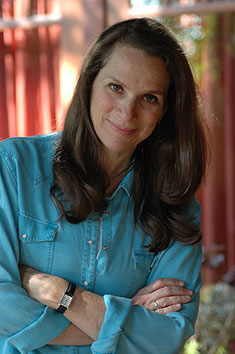 KHALIL TABSH was up all night delivering another baby and has just finished a 17-hour day, fueled only by cough drops and coffee.
KHALIL TABSH was up all night delivering another baby and has just finished a 17-hour day, fueled only by cough drops and coffee.
Now, wearing green surgical scrubs, the newly appointed chief of obstetrics at the UCLA School of Medicine scrambles from his black Mercedes 560 SL and sweeps into the conference room 30 minutes late, like a man possessed. He is here, at Sherman Oaks Community Hospital, to discuss a case in which some lives must be ended to save others. And for Tabsh, the case is simple--a medical necessity--although he, perhaps more than anyone, still feels torn by it.
His 34-year-old patient has flown here from a small Midwestern town. For eight years, she has tried to conceive. Last year, she had a miscarriage. But in recent weeks, after in vitro fertilization, she had five embryos implanted in her womb and all five unexpectedly began to thrive. Now, the odds are not in her favor for a healthy pregnancy unless he uses his technical mastery: He must end the lives of three fetuses. Kill three to save two. That will allow this farmer's wife to have the baby she so desperately wants. In fact, she can safely deliver twins, he reasons. If he does nothing, chances are that all five babies will either die or be born so premature that they'll suffer brain damage and a host of other problems. The third option is to abort them all.
The audience Tabsh is trying to win over--a panel of doctors, lawyers and ethicists that compose the bioethics committee of the Los Angeles County Bar Assn.--is moved but not persuaded. Tabsh is not asking permission--the guidelines for doing such an experimental procedure are set by himself and a hospital research committee. But he does seem to be seeking approval, and he is certainly hoping for help in the struggle to balance what can be done, what the patient wants done and what should be done in cases like these.
Tonight, there is no consensus about the procedure in question, called selective termination or reduction of pregnancy, its safety and accuracy still unproved and its nomenclature a thinly veiled means of obscuring the emotional burdens of abortion.
"Aren't you playing a moral poker game with these fetuses?" one doctor asks.
"If we create human life with the knowledge that if there's too many we can reduce their numbers, there's an inherent disrespect in that," another says. "We've got some doctors putting in extra babies only to turn to another doctor and ask him to get rid of a couple of them."
"The future to me is bleak because I don't know how this will be controlled," says a third. "More and more people are pushing for aggressive fertility treatments. And we're seeing more and more requests for selective reductions."
Tabsh looks pained. "Patients with one baby with mental retardation--they suffer," he says. The voice is Middle Eastern, the delivery brisk but gentle. "Can you imagine taking home five? But, you know, it's very stressful on the person doing this procedure. I feel sick to my stomach every time I do this. It is not pleasant."
Tabsh is one of a handful of doctors across the country who is quietly pursuing selective termination. Technically, it is fairly straightforward--just a sidestep from amniocentesis. During the first trimester of pregnancy, when the fetuses are about 1 1/2 inches long, he watches them on a television monitor via ultrasound and selects those that, because of their position in the uterus, are most accessible. Still watching the monitor, he inserts a 22-gauge needle into the mother's abdomen, through the uterus and into the chest cavity of the fetus and injects a lethal dose of potassium chloride. The heart stops and the fetus dies; in time, it is absorbed by the mother's body.
"I'm pro-choice and I'm pro-life," Tabsh tells the assembled group, thinking of the 20 times in the past two years that he has ended the lives of some fetuses to save others sharing a womb. "Knowing 20 of my patients have taken home healthy babies--this is why I do it."
WHAT TABSH is wrestling with on this night is what he faces daily--a moral and ethical dissonance caused by what medical science enables him to do. That conflict defines his rapidly advancing branch of medicine--perinatology (literally, "around birth"), or maternal-fetal medicine. Perinatology turns on high-risk cases in which both mother and baby are the patients, not one or the other. It is the study of complicated pregnancies and of prenatal diagnosis, the wielding of tools such as ultrasound (also known as sonography) or amniocentesis or chorionic villi sampling, all of which allow one to "see" what is happening in the womb. Couples seek the new technology's experts--a rare handful among whom Tabsh is prominent--to predict a pregnancy's outcome and determine when to intervene to save a fetal life or end it, when to assure a successful pregnancy or terminate it.



